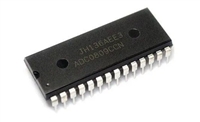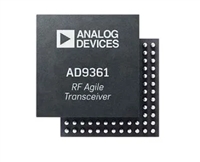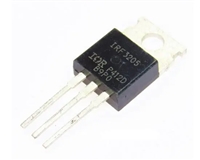| 是否无铅: | 不含铅 | 是否Rohs认证: | 符合 |
| 生命周期: | Active | 零件包装代码: | SOT-23 |
| 包装说明: | ROHS COMPLIANT, PLASTIC, SOT-23, 3 PIN | 针数: | 3 |
| Reach Compliance Code: | compliant | ECCN代码: | EAR99 |
| HTS代码: | 8542.32.00.51 | Factory Lead Time: | 12 weeks |
| 风险等级: | 1.48 | Samacsys Confidence: | 3 |
| Samacsys Status: | Released | 2D Presentation: | https://componentsearchengine.com/2D/0T/158350.2.1.png |
| Schematic Symbol: | https://componentsearchengine.com/symbol.php?partID=158350 | PCB Footprint: | https://componentsearchengine.com/footprint.php?partID=158350 |
| 3D View: | https://componentsearchengine.com/viewer/3D.php?partID=158350 | Samacsys PartID: | 158350 |
| Samacsys Image: | https://componentsearchengine.com/Images/9/11AA040T-I/TT.jpg | Samacsys Thumbnail Image: | https://componentsearchengine.com/Thumbnails/2/11AA040T-I/TT.jpg |
| Samacsys Pin Count: | 3 | Samacsys Part Category: | Integrated Circuit |
| Samacsys Package Category: | SOT23 (3-Pin) | Samacsys Footprint Name: | (TT)(SOT-23) |
| Samacsys Released Date: | 2015-04-16 09:48:08 | Is Samacsys: | N |
| 最大时钟频率 (fCLK): | 1 MHz | 数据保留时间-最小值: | 200 |
| 耐久性: | 1000000 Write/Erase Cycles | JESD-30 代码: | R-PDSO-G3 |
| JESD-609代码: | e3 | 长度: | 2.9 mm |
| 内存密度: | 4096 bit | 内存集成电路类型: | EEPROM |
| 内存宽度: | 8 | 湿度敏感等级: | 1 |
| 功能数量: | 1 | 端子数量: | 3 |
| 字数: | 512 words | 字数代码: | 512 |
| 工作模式: | SYNCHRONOUS | 最高工作温度: | 85 °C |
| 最低工作温度: | -40 °C | 组织: | 512X8 |
| 封装主体材料: | PLASTIC/EPOXY | 封装代码: | TSSOP |
| 封装等效代码: | TO-236 | 封装形状: | RECTANGULAR |
| 封装形式: | SMALL OUTLINE, THIN PROFILE, SHRINK PITCH | 并行/串行: | SERIAL |
| 峰值回流温度(摄氏度): | 260 | 电源: | 2/5 V |
| 认证状态: | Not Qualified | 座面最大高度: | 1.12 mm |
| 串行总线类型: | 1-WIRE | 最大待机电流: | 0.000005 A |
| 子类别: | EEPROMs | 最大压摆率: | 0.005 mA |
| 最大供电电压 (Vsup): | 5.5 V | 最小供电电压 (Vsup): | 1.8 V |
| 标称供电电压 (Vsup): | 5 V | 表面贴装: | YES |
| 技术: | CMOS | 温度等级: | INDUSTRIAL |
| 端子面层: | Matte Tin (Sn) - annealed | 端子形式: | GULL WING |
| 端子节距: | 0.95 mm | 端子位置: | DUAL |
| 处于峰值回流温度下的最长时间: | 40 | 宽度: | 1.3 mm |
| 最长写入周期时间 (tWC): | 10 ms | 写保护: | SOFTWARE |
| Base Number Matches: | 1 |
| 型号 | 品牌 | 描述 | 获取价格 | 数据表 |
| 11AA040T-I/TO | MICROCHIP | 512 X 8 1-WIRE SERIAL EEPROM, PBCY3, ROHS COMPLIANT, PLASTIC, TO-92, 3 PIN |
获取价格 |

|
| 11AA040T-I/TT | MICROCHIP | 1K-16K UNI/O® Serial EEPROM Family Data Sheet |
获取价格 |

|
| 11AA040T-ICS16K | MICROCHIP | 1K-16K UNI/O® Serial EEPROM Family Data Sheet |
获取价格 |

|
| 11AA040T-IMNY | MICROCHIP | 1K-16K UNI/O® Serial EEPROM Family Data Sheet |
获取价格 |

|
| 11AA040T-IMS | MICROCHIP | 1K-16K UNI/O® Serial EEPROM Family Data Sheet |
获取价格 |

|
| 11AA040T-IP | MICROCHIP | 1K-16K UNI/O® Serial EEPROM Family Data Sheet |
获取价格 |

|
 SI2301 N沟道MOSFET:资料手册参数分析
SI2301 N沟道MOSFET:资料手册参数分析

 ADC0809逐次逼近寄存器型模数转换器:资料手册参数分析
ADC0809逐次逼近寄存器型模数转换器:资料手册参数分析

 AD9361捷变收发器:全面参数解析与关键特性概览
AD9361捷变收发器:全面参数解析与关键特性概览

 IRF3205功率MOSFET:资料手册参数分析
IRF3205功率MOSFET:资料手册参数分析
